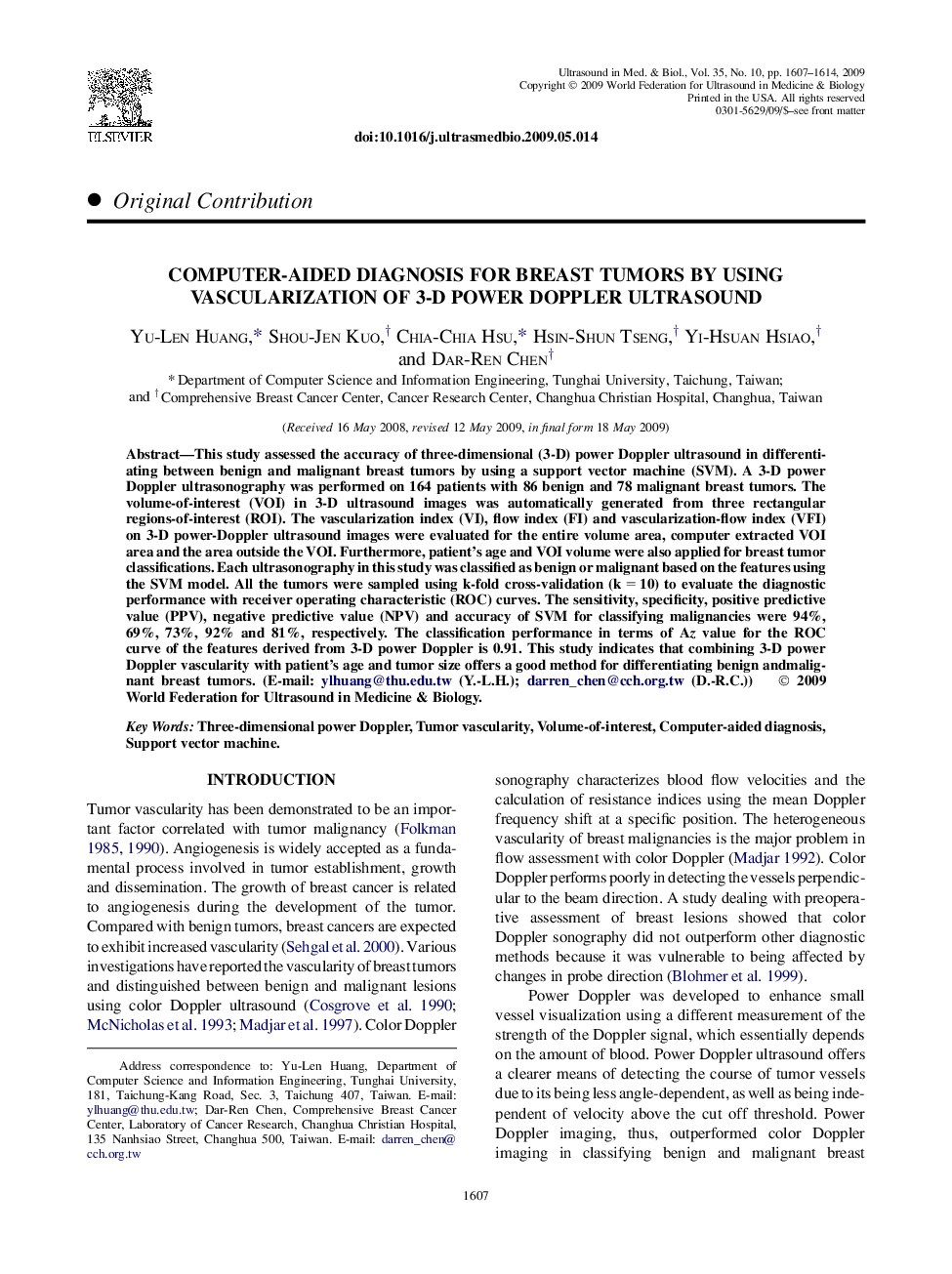| Article ID | Journal | Published Year | Pages | File Type |
|---|---|---|---|---|
| 1762019 | Ultrasound in Medicine & Biology | 2009 | 8 Pages |
Abstract
This study assessed the accuracy of three-dimensional (3-D) power Doppler ultrasound in differentiating between benign and malignant breast tumors by using a support vector machine (SVM). A 3-D power Doppler ultrasonography was performed on 164 patients with 86 benign and 78 malignant breast tumors. The volume-of-interest (VOI) in 3-D ultrasound images was automatically generated from three rectangular regions-of-interest (ROI). The vascularization index (VI), flow index (FI) and vascularization-flow index (VFI) on 3-D power-Doppler ultrasound images were evaluated for the entire volume area, computer extracted VOI area and the area outside the VOI. Furthermore, patient's age and VOI volume were also applied for breast tumor classifications. Each ultrasonography in this study was classified as benign or malignant based on the features using the SVM model. All the tumors were sampled using k-fold cross-validation (k = 10) to evaluate the diagnostic performance with receiver operating characteristic (ROC) curves. The sensitivity, specificity, positive predictive value (PPV), negative predictive value (NPV) and accuracy of SVM for classifying malignancies were 94%, 69%, 73%, 92% and 81%, respectively. The classification performance in terms of Az value for the ROC curve of the features derived from 3-D power Doppler is 0.91. This study indicates that combining 3-D power Doppler vascularity with patient's age and tumor size offers a good method for differentiating benign andmalignant breast tumors. (E-mail: ylhuang@thu.edu.tw (Y.-L.H.); darren_chen@cch.org.tw (D.-R.C.))
Keywords
Related Topics
Physical Sciences and Engineering
Physics and Astronomy
Acoustics and Ultrasonics
Authors
Yu-Len Huang, Shou-Jen Kuo, Chia-Chia Hsu, Hsin-Shun Tseng, Yi-Hsuan Hsiao, Dar-Ren Chen,
